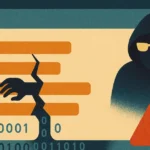SaaS apps have revolutionized how businesses operate, offering flexibility, scalability, and ease of use. But with great convenience comes great chaos—enter SaaS sprawl, the unchecked explosion of SaaS applications across an organization. While employees and teams eagerly adopt new tools to boost productivity, security and IT teams are left scrambling to regain control over an ever-growing, often invisible ecosystem of apps.
Think about it—how many SaaS tools does your organization use? Now, how many of those were actually vetted by IT? If you don’t know the answer, you’re not alone.
What is SaaS Sprawl?
SaaS sprawl happens when employees, teams, and even entire departments continuously adopt SaaS applications without proper oversight. This leads to shadow IT, security blind spots, compliance nightmares, and rising costs from redundant or underutilized licenses. The bigger the sprawl, the harder it becomes to manage access, enforce security policies, and maintain compliance.
It’s not just about the sheer number of applications—it’s about the hidden risks that come with them.
Why SaaS Sprawl is a Security Problem
At first glance, SaaS sprawl might seem like an IT inconvenience, but in reality, it’s a major security risk. Here’s why:
- Shadow IT Creates Security Gaps
When employees sign up for SaaS tools without IT approval, security teams lose visibility into where sensitive company data is being stored, who has access to it, and whether the application meets security standards. - SSO Bypass Leaves Accounts Unprotected
Many apps allow users to log in with personal credentials instead of enterprise Single Sign-On (SSO). This means they bypass critical security measures like Multi-Factor Authentication (MFA) and centralized identity management. - Orphaned Accounts Lead to Unauthorized Access
Employees leave, but their SaaS accounts often remain active, creating orphaned accounts that bad actors can exploit. If an ex-employee had access to sensitive data, their old login could become a backdoor for cyber threats. - App-to-App Connectivity Expands the Attack Surface
SaaS apps don’t exist in isolation. They connect with other tools, sharing data and permissions, often without IT oversight. A weak link in one app can expose an entire network. - Unmanaged Licenses Waste Budget
Aside from security risks, SaaS sprawl bleeds money. Organizations end up paying for unused or redundant applications, mismanaging licenses, and struggling to track renewals.
Real-World Examples of SaaS Sprawl Risks
SaaS sprawl isn’t just a hypothetical issue—it has led to real breaches, compliance failures, and financial losses for organizations that failed to manage their growing SaaS environments. Here are a few notable examples:
1. MGM Resorts Breach (2023) – Unmanaged SaaS Access
In 2023, MGM Resorts suffered a massive cyberattack that crippled its operations, from slot machines to hotel check-ins. The breach started with a compromised SaaS account that wasn’t adequately secured, allowing attackers to escalate access and move laterally through systems. Unmanaged access and lack of oversight on SaaS credentials played a key role.
2. Okta Compromise – SSO Bypass in Action
In another major breach, attackers used SSO bypass tactics to gain access to Okta’s support systems. Because certain applications were outside SSO enforcement, attackers were able to access sensitive data without triggering security controls. This highlights how SaaS sprawl creates identity security gaps that can be exploited.
3. A Fortune 500 Company Paid Millions in SaaS Licensing Waste
A large enterprise discovered that 30% of its SaaS licenses were unused due to duplicate apps, employees who had left the company, and poor visibility into SaaS usage. This resulted in millions of dollars in wasted spend annually, underscoring the need for SaaS inventory and license optimization.
How to Regain Control Over SaaS Sprawl
Managing SaaS sprawl doesn’t mean stifling productivity—it means creating a secure, efficient, and cost-effective SaaS environment. Here’s how:
- Discover & Inventory All SaaS Apps: Use automated discovery tools to identify every SaaS application in use, including those outside IT’s radar.
- Enforce Identity & Access Controls: Ensure SaaS apps are integrated with SSO and MFA, eliminating risky credentials and preventing SSO bypass.
- Automate Offboarding & Access Reviews: Implement workflows to remove access immediately when employees leave or no longer need an app.
- Monitor App-to-App Connectivity: Track how SaaS apps exchange data to prevent unauthorized sharing and potential security gaps.
- Optimize Licenses & Reduce Redundancy: Regularly audit SaaS usage to eliminate duplicate apps, downgrade unused licenses, and cut costs.
Frequently Asked Questions (FAQ)
1. How does SaaS sprawl happen?
SaaS sprawl happens when employees adopt SaaS applications independently, often without IT approval. The ease of SaaS sign-ups, remote work, and department-specific tools contribute to this rapid, unmanaged growth.
2. What security risks does SaaS sprawl create?
SaaS sprawl introduces shadow IT, identity sprawl, orphaned accounts, SSO bypass, and unmanaged app-to-app connections, all of which can lead to data breaches, unauthorized access, and compliance violations.
3. How can we prevent SaaS sprawl without slowing down productivity?
The goal isn’t to stop employees from using SaaS—it’s to secure and manage it effectively. Implement SaaS discovery, SSO enforcement, access controls, and automated security policies to balance flexibility with security.
4. How does SaaS sprawl affect compliance?
Compliance regulations (GDPR, HIPAA, CMMC) require organizations to track data access, enforce identity security, and protect sensitive information. SaaS sprawl makes it harder to maintain visibility and control, increasing compliance risks.
5. What’s the difference between SaaS sprawl and shadow IT?
Shadow IT refers to unauthorized SaaS usage, while SaaS sprawl includes both approved and unapproved SaaS applications growing out of control.
6. Can SaaS sprawl be completely eliminated?
No, but it can be effectively managed with the right identity security measures. The key is to continuously monitor, enforce policies, and automate risk remediation.


